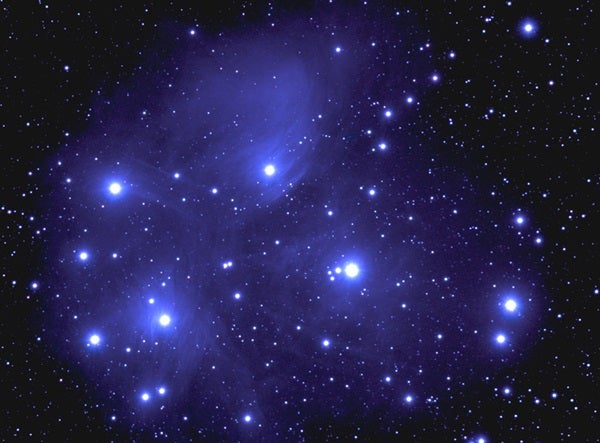The Pleiades (M45) is one of the finest open star clusters for binoculars found anywhere in the sky during any season of the year. They are always one of my first stops whenever I head out at this time of year.
NGC 1647 is found about half a binocular field (3°) northeast of Aldebaran. The 200 stars that belong to this swarm blend into a faint blur through 50-mm binoculars, but giant binoculars may reveal a dozen or so individual stars.
NGC 1746 is a large open cluster wedged in between and about halfway along Taurus’ two horns. Twenty stars are identified as true associates of NGC 1746, with several visible in binoculars.
NGC 1807 consists of about 20 stars. Giant binoculars may just be able to discern the brighter cluster stars set in a cruciform. Look for this cluster and NGC 1817 some 10° to the east of Aldebaran.
NGC 1817 is a less distinct object than NGC 1807, even though it has about three times as many stars. The brightest stars found within only reach 10th magnitude and are typically lost in a faint glow when viewed through most binoculars. Giant binoculars will show a few faint stars in a zigzag pattern.










